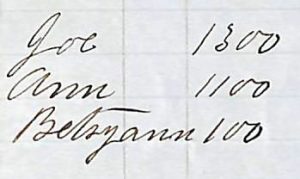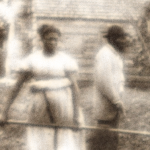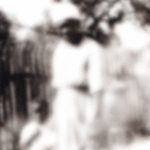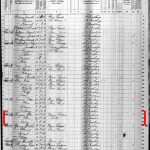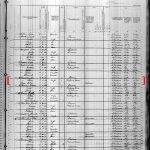In the 1860/1861 inventories, Family Group 3 (FG03) was composed of Joe, Ann, and Betsy-Ann. This group appears to consist of a young couple and their newborn daughter Betsy-Ann. As will be examined below, it appears that Joe is the son of elder London and Phyllis from Family Group 2. According to Witherspoon family estate documents, Joe and Ann were enslaved at Lowthers Lake Plantation near Mechanicsville, South Carolina.1 Background on the Lowthers Lake Plantation and the Witherspoon family can be found here.
After the death of John D. Witherspoon in 1860 and the murder of his wife Elizabeth 1861, the enslaved community was divided by court order. Joe, Ann, and Betsy-Ann were sent to John D. Witherspoon’s daughter, Sarah Cantey Williams, as part of the estate division.2
Surviving Freedmen’s Bureau labor contracts between Sarah Cantey Williams and her emancipated laborers show that Joe remained on the Williams plantations after 1865. The 1865 labor contract shows the names Joe, Hector, London, Elias, and Daniel in this sequential order, living on the Barn Plantation located on Robbins Neck just southeast of Society Hill on the Darlington District side of the Great Pee Dee River. While three Joes are listed on this 1865 contract, the placement of this specific Joe in this order of names is very suggestive of a familial relationship with members of Family Group 2.3 Two freedmen named Joe remain on the Barn plantation in 1866 according to new contracts, but it is unclear if this includes Joe from FG03.4
Joe and Ann have not been located in the 1869 South Carolina State Census, but it is possible they were enumerated as part of the London Witherspoon household in Colfax Township which documents 22 family members (11 males and 11 females) all likely linked to Family Group 2.5




